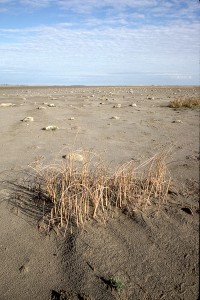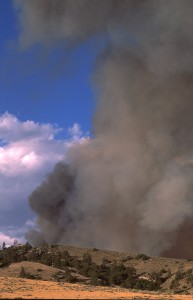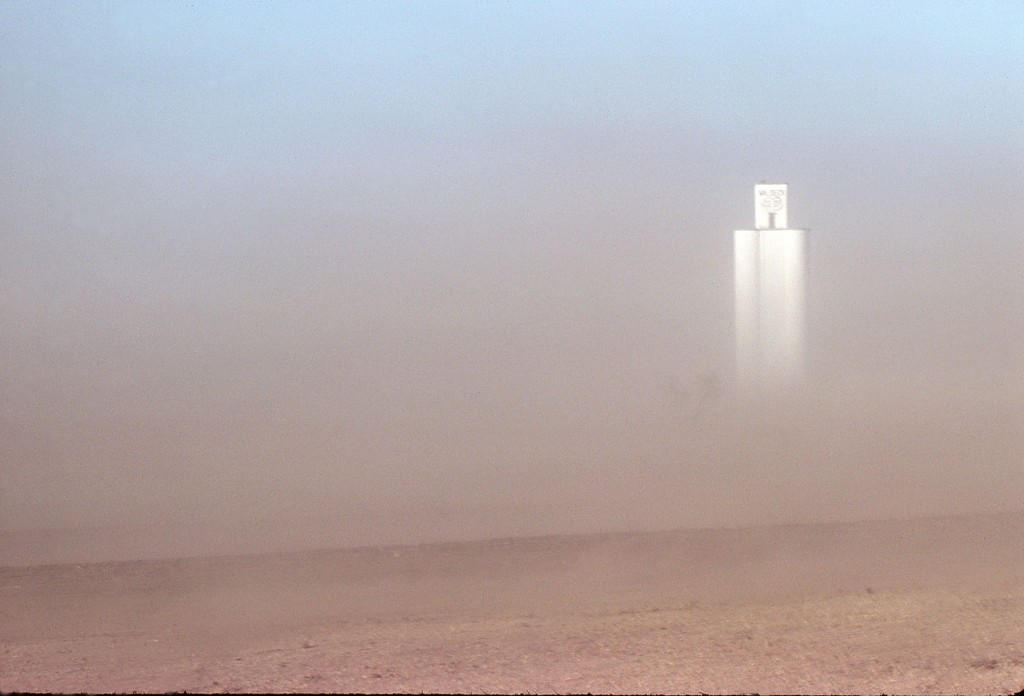FOR THIRTY YEARS AFTER JIM HANSEN AND HIS COLLEAGUES AT NASA FIRST WARNED US THAT WE WERE CHANGING THE EARTH’S CLIMATE, the discussion focused on ways to reverse, or at least stabilize, the process. That dialog gained volume and urgency as the relationship between rising concentrations of greenhouse gases and increasing worldwide temperature was described with greater precision over a longer and long span of time.
Over the last decade, the discussion of climate change has dilated to include a new concept: adaptation. The release of the recent report from the IPCC’s Adaptation Committee has stimulated another round in the conversation about how we should respond to the heating of the planet.
As far as I can tell, the idea first emerged as a cynical fallback position among climate change deniers, who were forced by accumulating data to admit that climate was, in fact, changing but who were unwilling to accept any proposals that would reduce human emissions of greenhouse gases. In recent years, it has been taken up by people on the far side of the spectrum in the debate, those observers who have lost hope that our species can restrain its appetite for fossil fuels in time to avert major, and essentially irreversible, shifts in climate.
I have little patience for the deniers’ view of the issue, which is so clearly driven by a combination of contempt for science and a vision of politics, economics, and ecological reality that would be comic if it weren’t so dangerous. On the other side of the debate, the people who have lost hope in our ability to stop climate change make a frighteningly plausible argument, but it has about the same effect as the case made by climate deniers: It tends to divert attention from the disease— the planet’s unprecedented capture of solar energy— and focuses on treatment of symptoms— which is to say, adaptation.
The word “adaptation” has a reassuring ring. It implies that we can cope with whatever challenges climate change may throw at us, that dealing with a global shift in climate shouldn’t be more than a footnote in human affairs over the next century. Anyone who has been paying attention realizes that we’re already adapting to the effects of climate change. While no reputable scientist in the field will argue that a specific storm or drought is the direct result of increasing concentrations of greenhouse gases, the scientific community is advising us that the probability of damaging events has already risen.
And so the restrictions on water use in drought-stricken California may well be an adaptation to climate change. These will certainly take a toll on the agricultural economy of California, and they’ll probably mean that I eat less lettuce in the next few months as well. The lingering drought on the southern and central plains has contributed to increasing grain prices, which have their effect on prices of commodities from breakfast cereal to the ethanol in our gas.
We’re in the process of spending billions of dollars to restore New Orleans in the wake of Hurricane Katrina and billions more rebuilding the central Atlantic coast after Superstorm Sandy. Apparently, we’re not ready to adapt to rising sea level and the prospect of more intense storms by moving away from these risky coasts, but we are willing to divert huge amounts of money from other public works to maintain life as usual in the face of growing risk. It’s part of the cost of adapting.
In the wake of the mudslide that killed at least thirty people in Oso, Washington, we hear that a study issued in 2000 warned of the risk of “catastrophic failure” on the slope. At the time, county officials considered buying all the property on the hillside and moving the residents. The cost was estimated at $1.6 million, more than the county wanted to spend, and the buyout probably wouldn’t have worked anyway, since it depended on convincing all the owners to sell.
Will owners in similar situations be willing to sell now? Will local governments be willing to spend the money necessary for such buyouts? Will new zoning ordinances be passed to restrict the public’s freedom to build in such high-risk areas? What is the price of this kind of “adaptation”?
Similar questions arise in the “wildland-urban” interface, where the rising risk of forest and brush fires poses an increasing threat to homes built by people who want to get away from it all. Over the last five years, the federal government, primarily through the U.S. Forest Service and Department of Interior, has spent an average of more than $3,400,000,000 (that’s billion) a year fighting wildfires.[i] That figure doesn’t count the money spent by the Federal Emergency Management Administration or state and local entities to save private property from wildfires. It also neglects the cost of wildfires in human lives. Who in the arid West will ever forget the news from Arizona last summer when nineteen members of a hotshot crew lost their lives in half an hour?
 In 2010, the World Bank estimated that helping the developing world adapt to a two-degree C. rise in temperature between now and 2050 will cost humanity between $70 billion and $100 billion a year.[ii] No one has been bold enough to offer an overall estimate of what it will cost to adapt to changing climate here in the United States, but at least one economist has estimated that the cost of Hurricane Katrina alone topped $250 billion.[iii] As impressive as it is, this number fails to assess the price in human life exacted by Katrina— more than 1,800 souls, according to officials.[iv]
In 2010, the World Bank estimated that helping the developing world adapt to a two-degree C. rise in temperature between now and 2050 will cost humanity between $70 billion and $100 billion a year.[ii] No one has been bold enough to offer an overall estimate of what it will cost to adapt to changing climate here in the United States, but at least one economist has estimated that the cost of Hurricane Katrina alone topped $250 billion.[iii] As impressive as it is, this number fails to assess the price in human life exacted by Katrina— more than 1,800 souls, according to officials.[iv]
Judging from the relative indifference the nation shows toward climate change issues, we seem willing to accept costs of this magnitude as a form of adaptation. Some have argued that a major rebuilding effort has its own economic benefits; the gross domestic product may show little, if any, response to the effects of a major storm, simply because the damage is at least partly balanced by the expenditures made during the recovery. That may be the case, from a strictly economic perspective, but there’s no progress in the transaction, no net benefit. Instead of choosing our way forward, we allow a deepening crisis to define our priorities for us and squander our efforts and capital in a losing battle to maintain the status quo.
Whether we decide to move large populations away from major weather threats, whether we choose to build massive levees to protect them from too much water or massive dams and pipelines to protect them from not enough, whether we leave them where they are, exposed to the dangers of storm and drought, then pay the cost in dollars and lives to deal with ensuing disasters, the best analysis from climate scientists tells us that the cost will continue to climb as concentrations of greenhouse gases and world temperatures rise. Without an adequate response to the underlying cause, the trouble we face is certain to get worse.
And unless we do something about the trend in global temperature, the concept of “adaptation” will eventually require more than new public works projects, a change in zoning, or a Congressional bill for disaster relief. It could eventually lead us into the primal realm of organic evolution, where success is defined by survival. Residents of temperate regions could be exposed to tropical pathogens and insect vectors for the first time. Regional shortages of fresh water and food, extended drought or widespread flooding could leave millions of people around the globe in desperate circumstances. At some point, shifting climate could mean the difference between life and death for a large fraction of humanity.
Which is why I’m uncomfortable with a discussion about climate change that ends with adaptation. We’re adapting, and with the damage we’ve already done to the atmosphere, we’ll have no choice but to continue to adapt over the coming decades. I’m the first to recognize that we need to be smart about that process, to make sure that the steps we take are efficient and durable over the long term. But dealing with the symptoms of climate change isn’t going to protect us from its deepening effects. We need to treat the disease. No discussion of climate change is complete without a commitment to a cure. Adapting won’t be enough.
[ii] http://documents.worldbank.org/curated/en/2010/01/16436675/economics-adaptation-climate-change-synthesis-report
[iii] http://news.unt.edu/news-releases/unt-experts-can-discuss-tropical-storm-gustav-and-hurricane-katrinas-3rd-anniversary
[iv] http://www.ncdc.noaa.gov/oa/reports/tech-report-200501z.pdf

Leave a Reply
You must be logged in to post a comment.